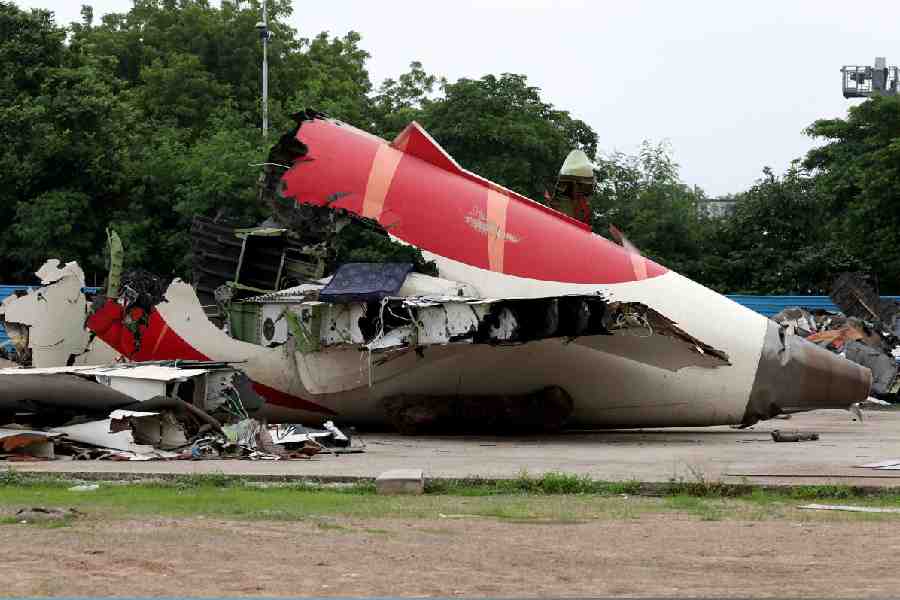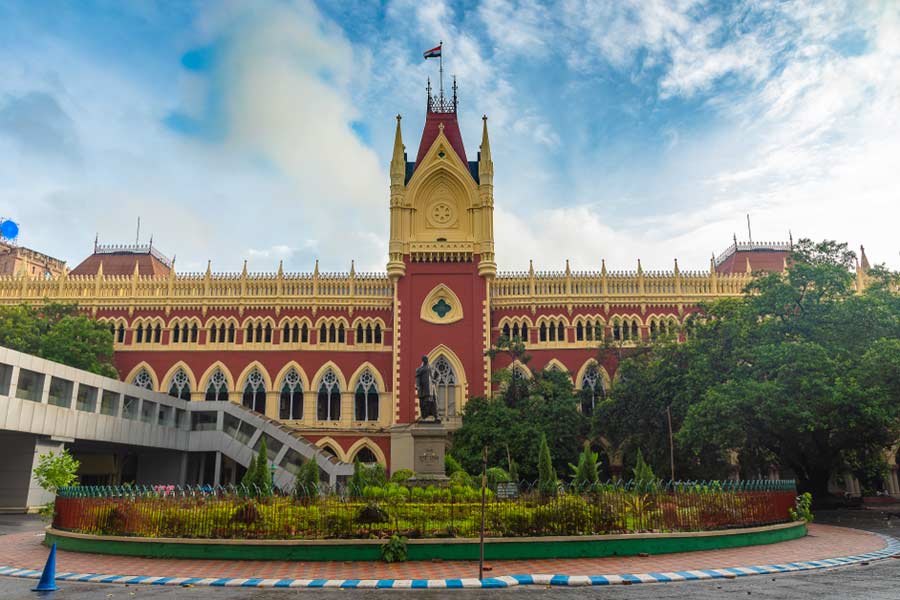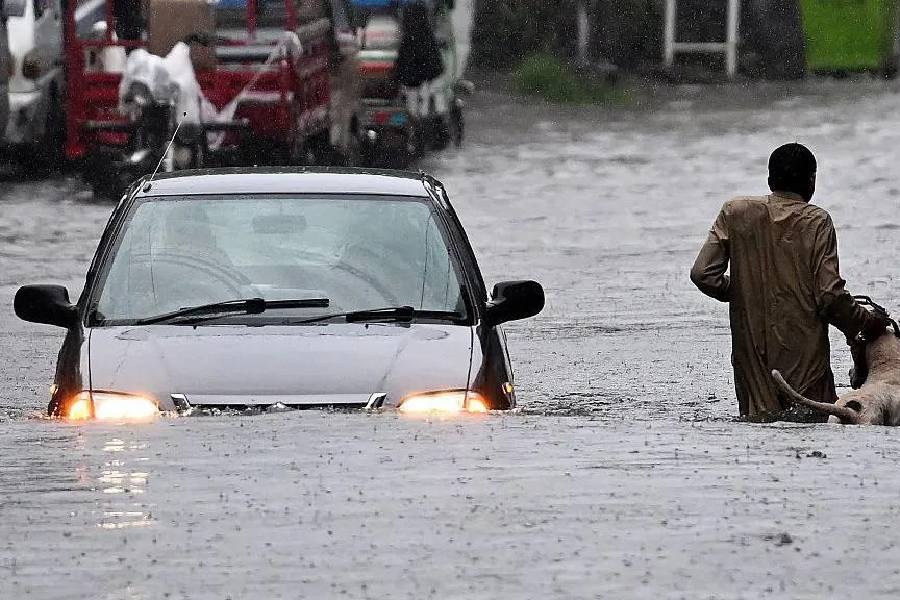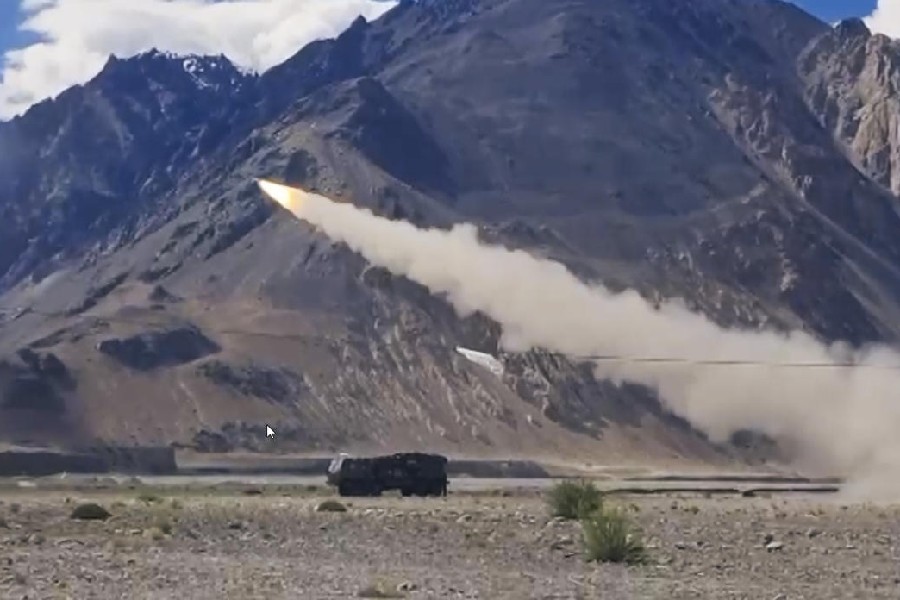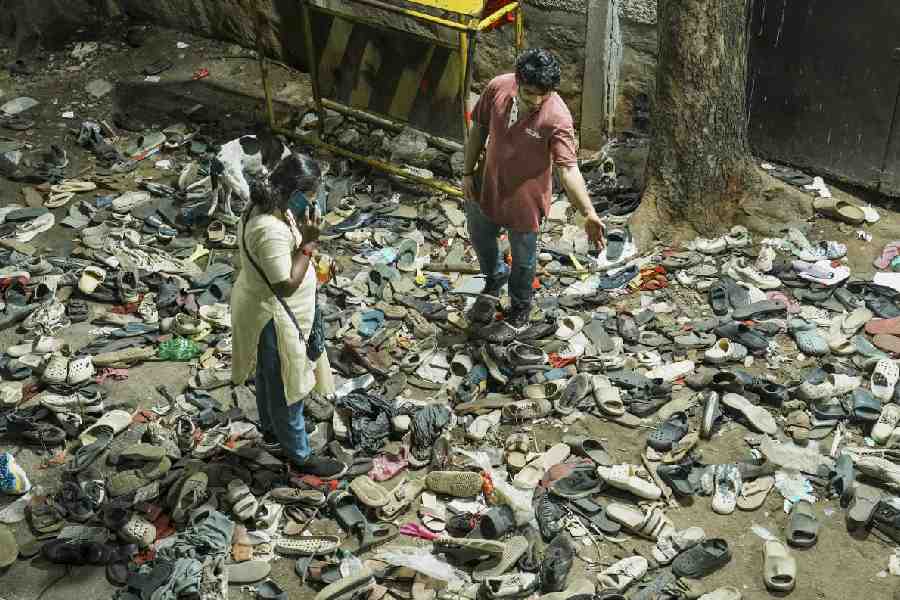 |
| Landscape shows area 1 km west of Domiasiat hamlet. To the left of this site is the mineralised Kylleng block and to the right Ryng-Am block, 3 km south of the mining zone |
It is a report which may open the doors to a fresh bout of controversy, but it could also act as a reference point for Domiasiat’s mammoth prospects and problems. A three-year Rs 1.2-crore project, commissioned by the department of science and technology, at the Centre and supported by the Atomic Energy Division has been undertaken by Nehu to glean information about Domiasiat’s air, soil, water, flora and fauna. The area has been in the eye of controversy when the Uranium Corporation of India Limited expressed interest in mining uranium, raking up the issue of possible health hazards and environmental degradation.
The baseline survey conducted by Nehu’s six faculty members from its chemistry, physics, zoology and sociology departments is at the stage of sample collection. If all goes well, the team of experts would provide some statistical analysis towards the year-end. “We are not going into the pros and cons but the status of the region. The end-user — be it government bodies or even the anti-nuclear lobby — can utilise this data as they deem fit,” says Darlando Khathing, reader at Nehu, who has been heading the project.
Explaining that radioactivity at Domiasiat is extremely low (around 50-30 micro rems, which is to be found almost anywhere in the country), Khathing says their project covers almost the whole of West Khasi Hills starting from Nongstoin upto Cherrapunjee in the East Khasi Hills in addition to the coal mining belt of Jaintia Hills. While the effects of radiation, if any, may not be confined to only Domiasiat, Khathing feels that the entire issue called for a more holistic approach.
So far, New Delhi has not given a final clearance owing to opposition from the Khasi Students Union, the Hill State People’s Democratic Party (HSPDP), Meghalaya People’s Human Rights Council, Heritage and Environment Status Preservation Organisation, among several other political bodies and NGOs who fear for the lives of the local inhabitants.
Khathing emphasises that the difference between Domiasiat, Jadugoda and perhaps most uranium mining sites elsewhere is the fact that at Domiasiat, the ore is available practically on the surface. “Our preliminary survey of radioactivity in the specified sites (of 200 hectares) has shown a radioactivity of 1000 micro rems and this is irrespective of whether the area is mined or not. Just 10 feet away the level of radioactivity is hardly of the order of 100 micro rems. In any case, 1,000 micro rems is within the permissible limits set by the Atomic Energy Regulatory Board,” he explains.
According to Khathing, an X-ray shot varies between 0.4-0.2 rems and in the case of Domiasiat, we are talking about micro rems, which is about a lakh times less. However, he concedes that his team may have assessed the radioactive limits and the rate of exposure in the specific areas but it cannot assess nor forecast the extent of radioactivity in case of the use of different types of chemicals which may cause environmental hazards.
Radiation hazards
Through repeated visits, Khathing realised that the Domiasiat village itself is located on the periphery of the general area and is about 4 km from the actual mining site. “The hamlet consists of six small-sized thatched houses with a total population of about 40 people, including children so that the question of resettlement of a large population does not arise. The level of radioactivity in the hutment area is of the order of 15-20 micro rems wherein the risk of high radioactivity to the immediate environment gets nullified,” he adds.
It is said that the Atomic Mining Division (AMD) has extracted 640 tonnes of ore and processed some yellow cake from it, which was sent elsewhere for further processing. Some of the unprocessed ore is in a storage area called the tailing tank, which is made of concrete over which turpentine and plastic sheets were spread and then the tailing stored. The mining division has withdrawn its activities from the area since November 1994. With the withdrawal and lack of maintenance of the road from Wahkaji to Domiasiat, the 12-km-odd stretch takes two hours by jeep. With the AMD’s withdrawal, the next phase might be taken up by the Uranium Corporation of India Limited (UCIL).
Khathing feels that to understand the safety aspects of the Domiasiat uranium programme, one would need to be aware of the actual numbers and data from the area itself. As a professor of physics, Khathing explains that in the case of Domiasiat mining, practically all the radiation from the uranium ore or the yellow cake are in the form of alphas. This means that the radiation can be easily contained. When transporting the yellow cake, drums used for transportation are sufficient to absorb all the alphas so that there is no danger of personal exposure to radiation.
However, Rev. P.B.M Basaiawmoit of the Heritage and Environment Status Preservation Organisation has an entirely different view to offer. He argues that the uranium waste from mining is usually dumped around the mining area and most often, it is done through the open pit system. “If experts are to be believed, this is the most dangerous system followed universally without any care whatsoever of contamination and health hazards.” He claims that for the past five years, the anti-nuclear lobby in Meghalaya has called for a public debate to decide on the viability of the mining project. But that has proved elusive. “We would welcome economic and social development that is not detrimental to the environment, health and livelihood of the local people,” he avers.
Green threat
Assuring that his organisation will build up public opinion against the mining issue at Domiasiat, Basaiawmoit does not rule out the possible intervention from international organisations such as Greenpeace and Friends of the Earth. His opinions are seconded by Samuel Jyrwa of the Khasi Students’ Union who cites the hazardous effects of radiation in Australia, Canada and, closer home, Jadugoda. “We have been opposing the mining and initial exploration at Domiasiat and even have the testimonies of the local residents. Almost all of them have some disease or the other. What is the use of development when people are dying and suffering?” he asks.
“A number of children have died of mysterious diseases and many villagers are suffering from tuberculosis-like symptoms and asthma due to uranium radiation,” says Hopingston Lyngdoh, legislator and president of the HSPDP. Domiasiat is a part of Nongstoin Assembly constituency represented by Lyngdoh who belongs to the ruling coalition government in Meghalaya.
It all began when the UCIL identified adequate resources of uranium in the cretaceous tertiary sedimentary basin at Domiasiat in the West Khasi Hills, stirring what seemed like a hornet’s nest. Plans to commercially exploit the region for meeting India’s nuclear power requirement came in for flak from environment experts, politicians and NGOs. Since the deposit has been characterised as the largest, richest, near-surface and low-cost uranium deposit ever discovered in the country, around 10,000 tonnes to be precise, it only added to fears of Domiasiat’s high risk of radioactivity. Based on its experience of four decades of uranium exploitation, UCIL’s officials are confident that uranium mining in Domiasiat would not cause any damage.


